What is Microsoft Lists?
Microsoft Lists is designed to track information, organize work, collaborate, and access data from one place. It is a smarter version of spreadsheets that's tailored for enhanced collaboration and easy task tracking.
Features of Microsoft Lists
Flexible views
Users can visualize data in list, calendar, gallery, and board views. For example, sales teams can view the status of their revenue goals using boards, support teams can see a list of tickets, and teams managing tight deadlines can use calendar view. This versatility helps teams display their data in the format that best suits their needs. Additionally, they can also choose if they want to share the views publicly or keep them private.
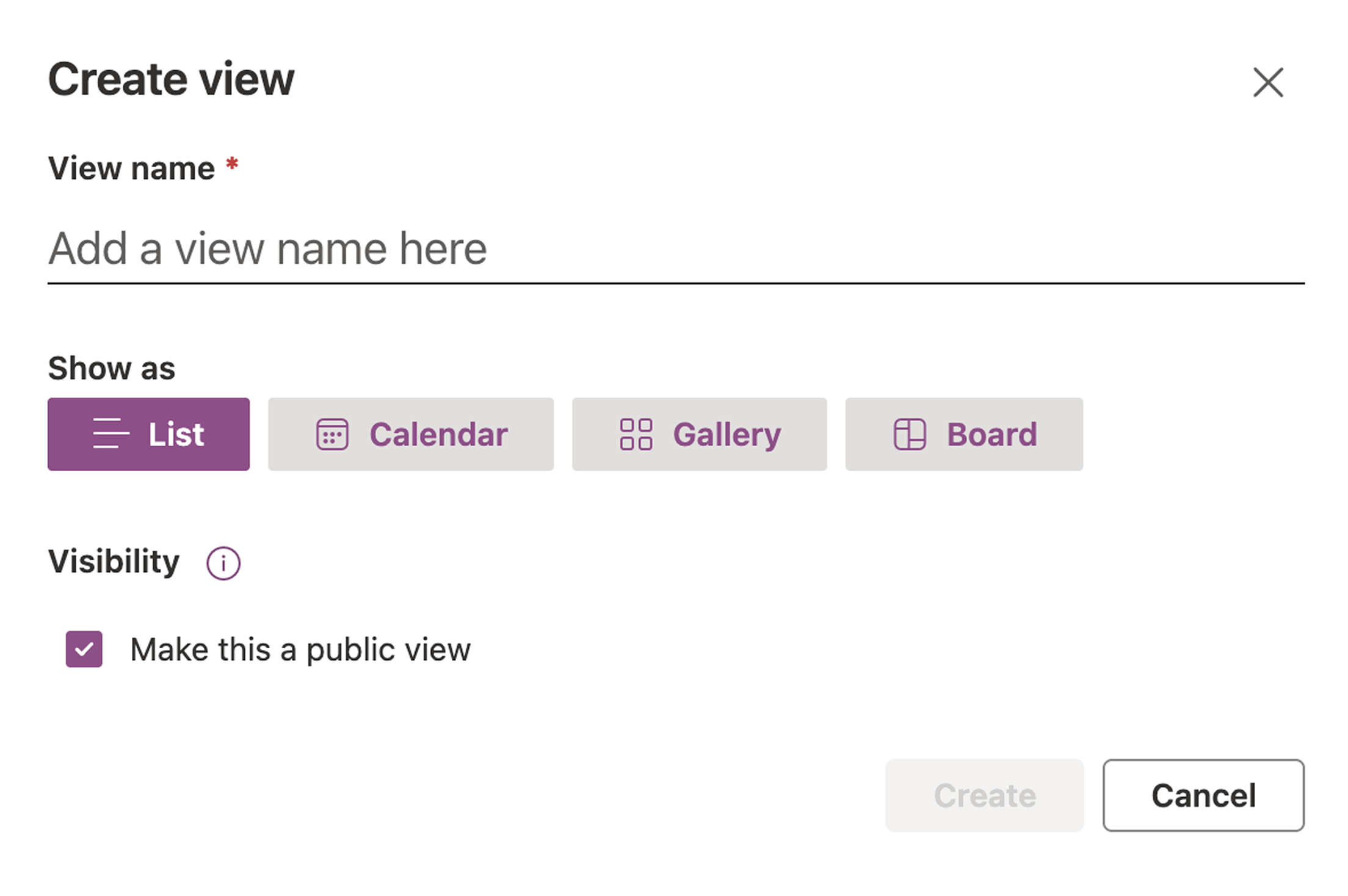
Email automation
Users can set up rules to automate emails based on simple conditions. The emails will trigger when a particular item is created, modified, or deleted from a list. This is helpful for teams to get notified of changes instantly.
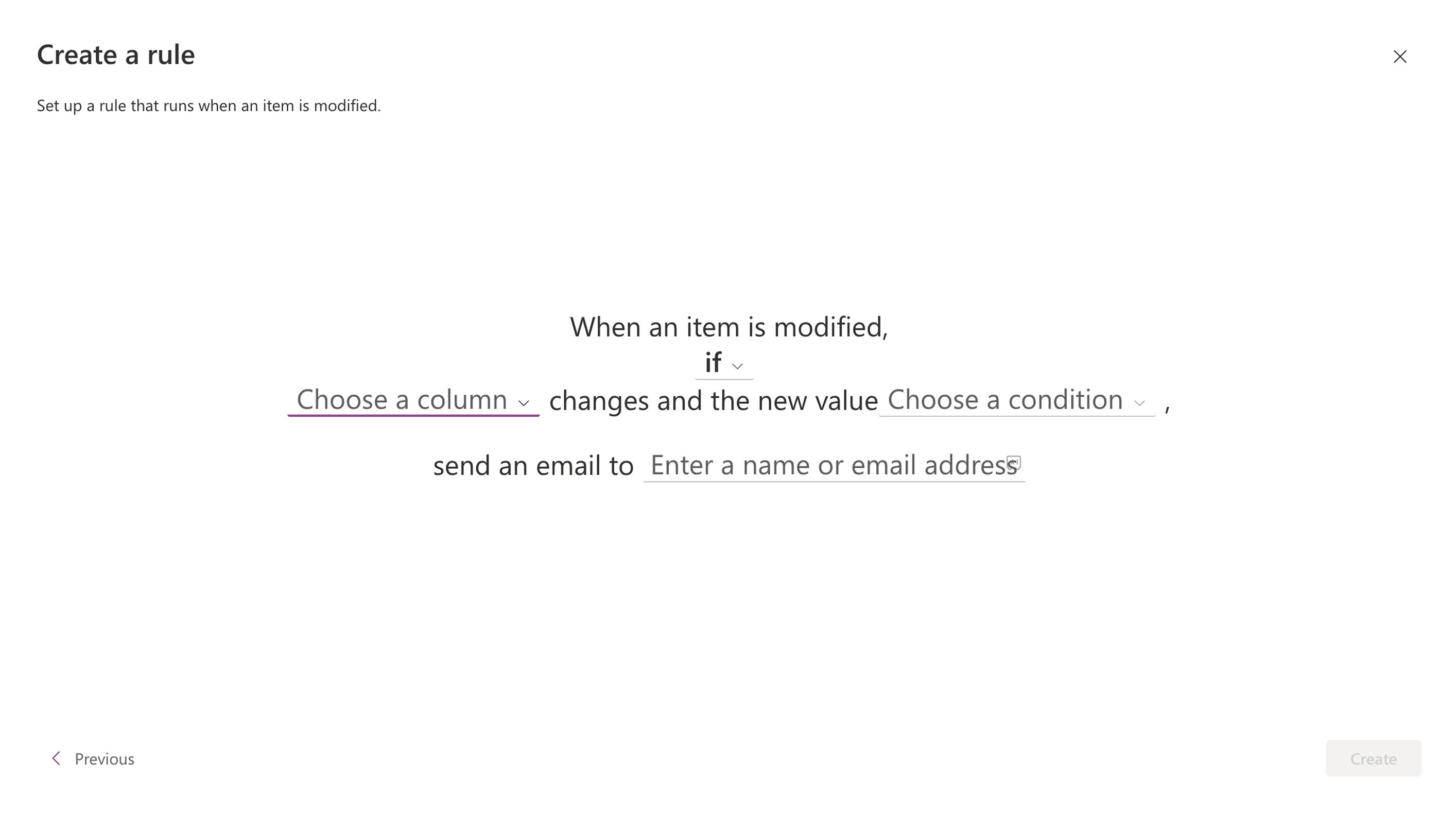
Easy sharing in the Microsoft ecosystem
Microsoft Lists works seamlessly with Microsoft Teams. For example, users can create task lists that are directly tied to projects, making it easier to assign work. They can use Microsoft Power Automate to set up approval workflows, ensuring that items progress only after being approved by the necessary stakeholders.
Drawbacks of Microsoft Lists
Limited views
Despite offering a handful of views, Microsoft Lists falls short when visualizing advanced data. It doesn't provide views like Gantt, timeline, and form. As businesses scale and data becomes more complex, teams need versatile views to interpret their data effectively.
Lack of dashboards
While Microsoft Lists supports numerical values, it doesn't have the ability to display key performance indicators (KPIs) or generate reports like pie charts, line graphs, bar graphs, and funnel charts. This is limiting for teams like sales and marketing, who rely on numbers to measure the success of their initiatives.
Without dashboards, Microsoft Lists can’t offer the deeper insights teams need for decision-making, so users have to depend on Power BI to vizualize their data. This can be a taxing workaround, especially for users who don't want to have data scattered across multiple platforms.
Dependence on the Microsoft ecosystem
Microsoft Lists offers limited value as a standalone app for managing work—it doesn't have the necessary collaboration, automation, and visualization features that teams need to manage work from a single tool.
Lack of external integrations
Microsoft Lists is built primarily to work within the Microsoft 365 ecosystem. While it can be integrated with a limited set of third-party apps, these integrations are often clunky and not as streamlined as those in other tools. If your team uses software outside the Microsoft family, collaboration and data sharing between platforms can be challenging. While tools like Zapier, Zoho Flow, or Power Automate can offer workarounds, these often require additional effort to set up.
Learning curve
For new users, Microsoft Lists can be overwhelming. While templates are available to make things easier, there is still a significant learning curve to understand how to structure lists effectively, particularly if you have a lot of data to manage.
Unlike modern alternatives, Microsoft Lists doesn't offer AI-powered assistance to help users quickly build and structure their lists based on natural language prompts, which can be a major hurdle for teams just starting.
Lack of mobile application
Microsoft Lists retired its mobile application in November 2025, making it difficult for businesses to access their lists on the go. Relying on web applications in this day and age isn't ideal, as relying solely on browser-based access can slow productivity, limit offline functionality, and create friction for teams who need fast, on-the-go interactions.
Limited data types
Microsoft Lists supports basic data types, such as text, numbers, dates, and choices. However, it lacks more advanced options like links, formulas, or relationships between task items. For teams that need to manage complex data, the limited data type options can be restrictive.
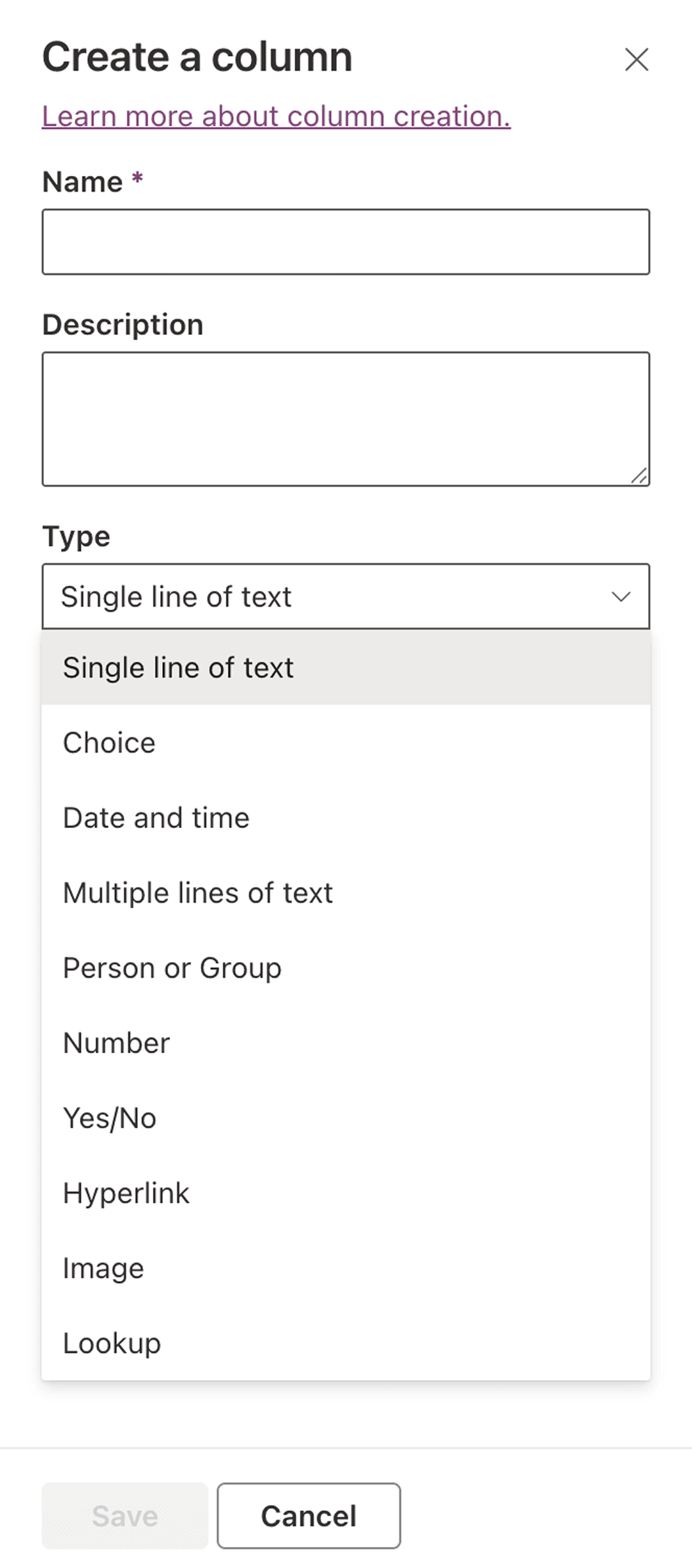
Zoho Tables: The better Microsoft Lists alternative
Zoho Tables is a modern work management tool that helps users plan and track work, streamline workflows, organize and visualize data, and collaborate contextually. Its flexibility helps users from any domain build lightweight custom solutions for their unique work needs. With its spreadsheet-like interface, Zoho Tables is easy to use while offering more advanced features than Microsoft Lists.
Why Zoho Tables is better than Microsoft Lists
Next-gen AI assistant
Zoho Tables is powered by Zia, a powerful AI assistant. It helps users create bases using conversational prompts. They don't have to start from scratch or rely on templates. It creates and organizes tables based on their needs, reducing the time spent manually configuring the app.
Automation
Zoho Tables offers native automation to send emails and create and update data. It's straightforward and works on simple triggers and actions.

Dashboards
Unlike Microsoft Lists, Zoho Tables lets users create dashboards with KPIs and charts like pie, bar, line, and funnel. It can also display data comparisons based on conditions. This visualization capability helps teams make quicker and better decisions. They don’t need additional tools to create simple reports.
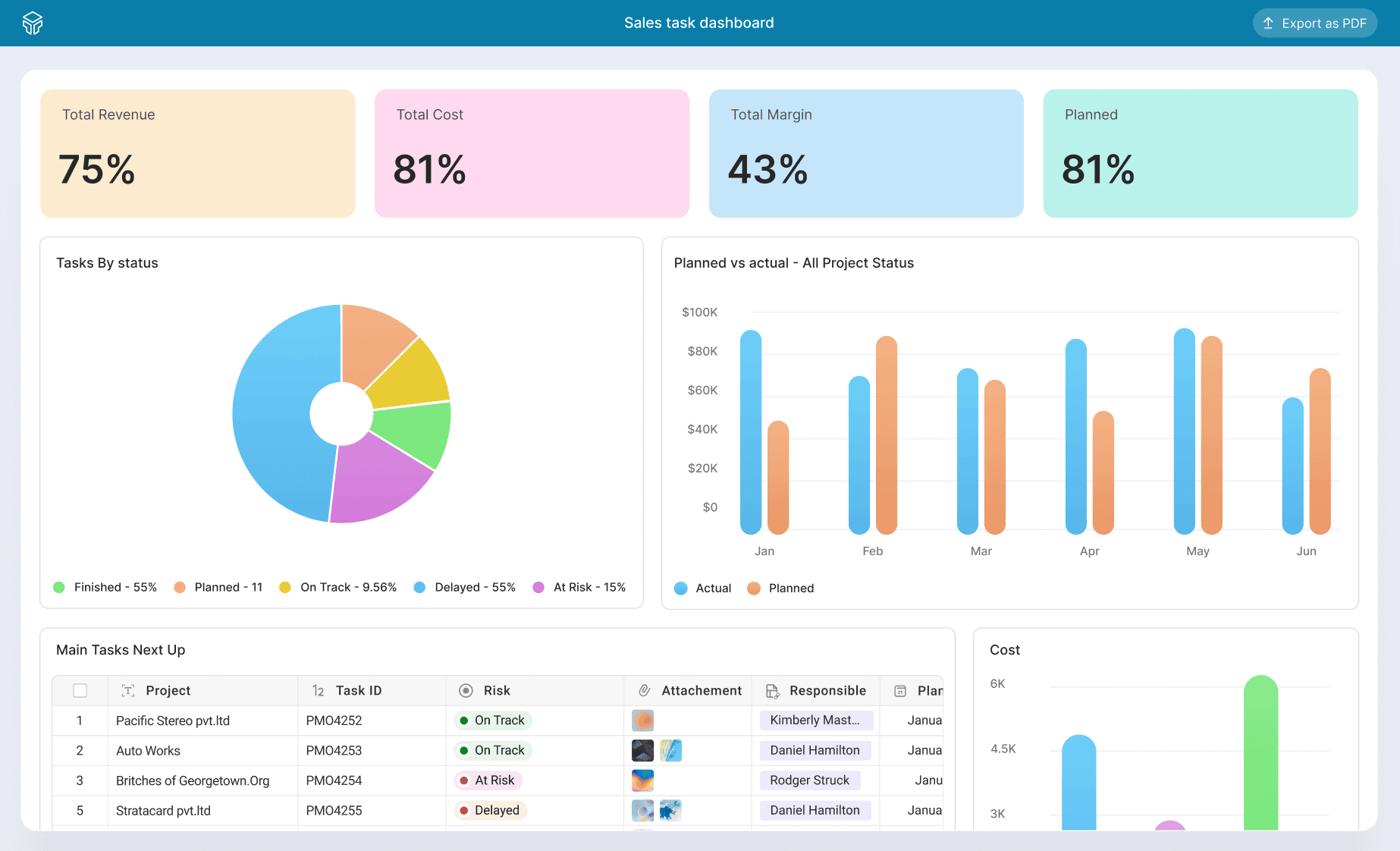
Bidirectional relationships
Users can create bidirectional relationships between tables with the link field instead of writing complex database queries. When data in one table changes, it updates automatically in all connected tables. Additional data fields like look up and roll up make it much easier to manage interrelated data.
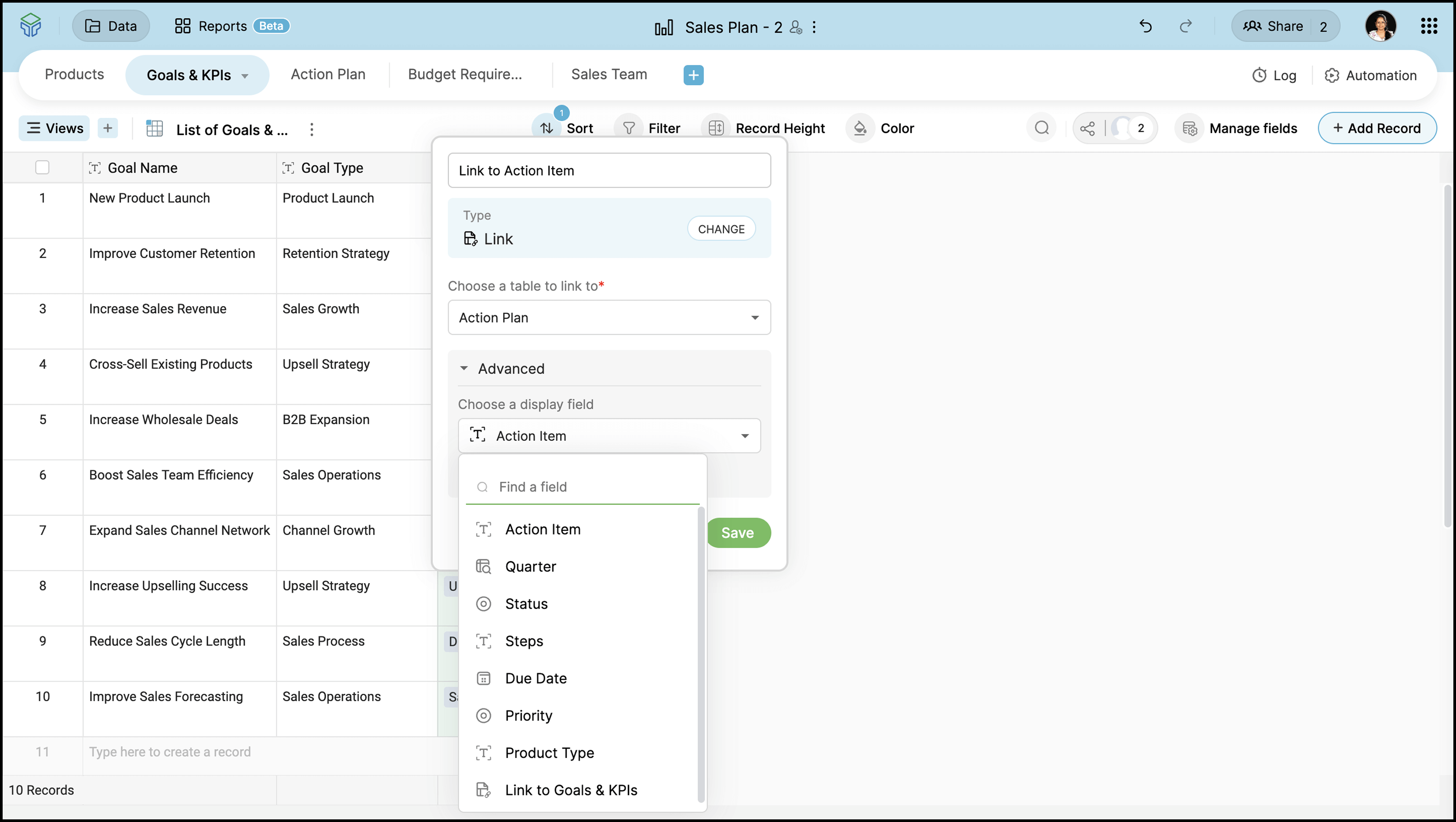
Smart collaboration
Zoho Tables fixes siloed teams with advanced collaboration features. It has live cursor tracking, meaning users can see when others are actively working on the same table. Collaborators can comment on records, tag one another, and keep track of updates in real time, promoting a more interactive environment. Managers can even assign different levels of access to their team members and create custom views for various stakeholders. This level of control allows for more secure and effective collaboration across teams.
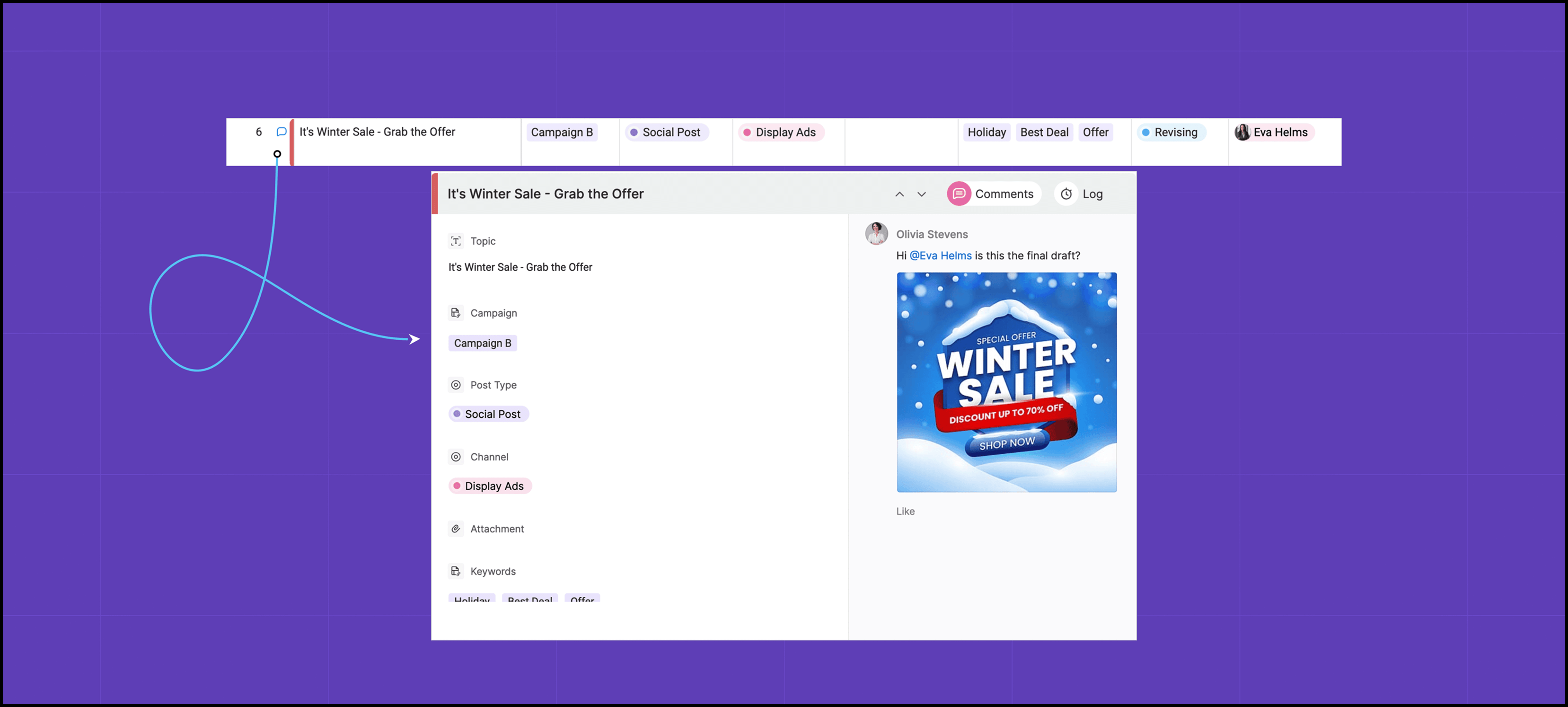
Cutting-edge mobile app
The Zoho Tables mobile app has all the features of the web app on top of mobile-specific features like uploading voice notes, picture-in-picture mode, OCR scanning, and base creation using Zia. These mobile features make it easier to manage tasks on the go. The best part is that Zoho Tables' mobile application also acts as a no-code solution builder on its own when compared to Microsoft Lists, which no longer supports a mobile application.
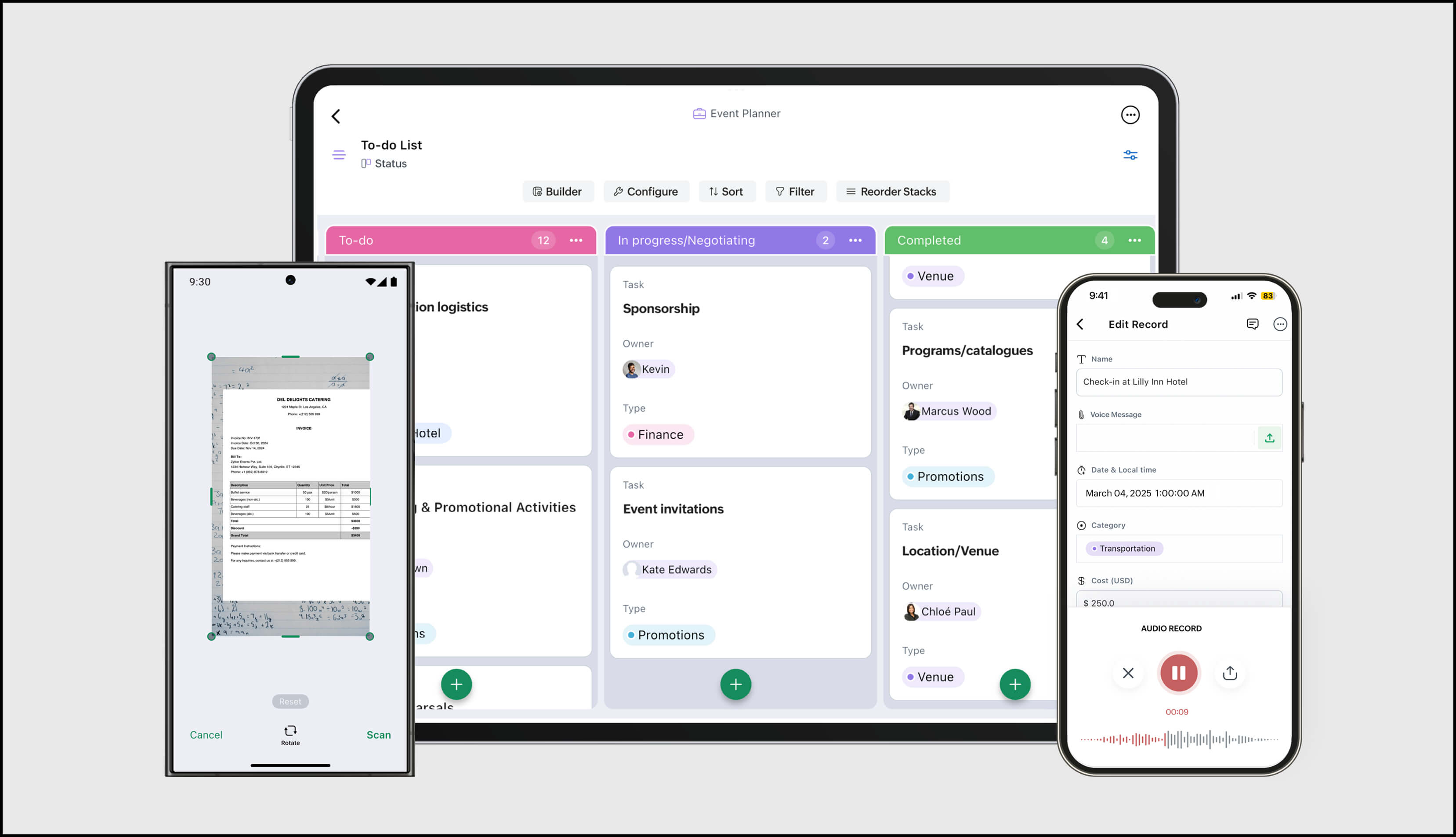
All third-party product name(s), trademark(s), and logo(s) are the property of their respective owner(s) and are used here solely for identification and comparison purposes. Their use does not imply any affiliation, sponsorship, or endorsement. Prices and features are drawn from publicly available information on each vendor’s website(s) as on 28.02.2023, and the information is subject to change on those website(s) at any time without notice. The information contained in this webpage is for general information purposes only and should not be considered as authorized information from the vendors. Prices published here may not include applicable taxes or discounts offered, which may alter the final price payable by a customer. Zoho makes no representations or warranties, express or implied, including, without limitation, warranties of accuracy, completeness, merchantability, or fitness for a particular purpose, and accepts no liability for any loss or damage arising from reliance on the information. Please contact us at legal@zohocorp.com if you believe any information is inaccurate or outdated.
